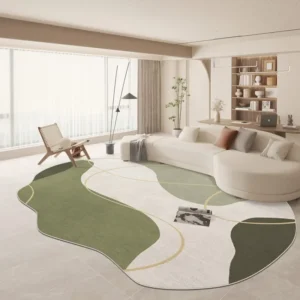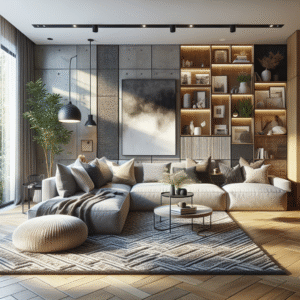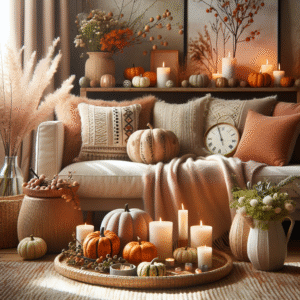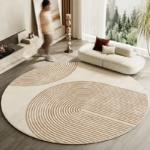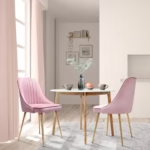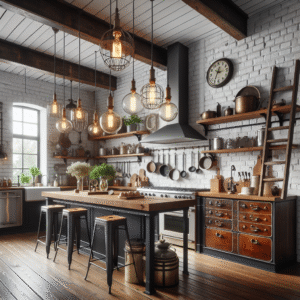Opening Section
Indoor plants can dramatically transform your space, not just aesthetically but also in terms of air quality and wellbeing. However, understanding how to style these green companions in a sustainable manner can be a bit daunting. That’s where this article comes in! You’ll learn how to effectively integrate indoor plants into your living and working environments while focusing on sustainability.
In this comprehensive guide, we’ll explore:
- The sustainability benefits of indoor plants.
- Choosing the right plants for your space.
- Creative styling techniques.
- Maintenance tips to ensure longevity.
- How to incorporate eco-friendly materials.
By the end of this article, you’ll be empowered to create beautiful, sustainable spaces that resonate with your values and aesthetic preferences.
Benefits of Indoor Plants for Sustainable Spaces
H2: Why Indoor Plants Matter
Indoor plants are more than just decorative elements. They provide a multitude of benefits:
- Air Quality Improvement: Plants are known for their air-purifying qualities, absorbing toxins and releasing oxygen. Research shows that certain plants can remove chemicals like formaldehyde and benzene from the air.
- Aesthetic Appeal: A well-styled indoor plant can enhance any space, creating a natural ambiance and increasing its visual interest.
- Emotional Wellbeing: Studies indicate that having plants indoors can reduce stress and enhance mood. A sustainable environment can contribute significantly to mental health and satisfaction.
Actionable Insight: Start with easy-care plants like pothos or snake plants to experience these benefits without overwhelming yourself.
H3: Sustainability Benefits
Emphasizing sustainability in your home or office through indoor plants has unique benefits:
- Resource Efficiency: Using locally sourced plants minimizes carbon emissions associated with transportation.
- Natural Decorations: Plants can serve as biophilic design elements that bring nature indoors, fostering a deeper connection with the environment.
- Waste Reduction: Choosing plants that require less water can contribute to more sustainable practices, especially in regions facing water scarcity.
Choosing the Right Plants
H2: Selecting Low-Maintenance Plants
Deciding which plants to incorporate into your indoor styling can be overwhelming. Here’s a curated list of low-maintenance plants perfect for any sustainable space:
H3: Popular Low-Maintenance Options
Pothos:
- Thrives in varied lighting.
- Requires minimal watering.
ZZ Plant:
- Tolerates neglect.
- Beautiful glossy leaves.
Spider Plant:
- Good air purifier.
- Can be propagated easily.
Peace Lily:
- Flowering plant that’s also a top air purifier.
- Prefers low light.
H3: Considerations for Plant Selection
When selecting plants for your sustainable space, keep these criteria in mind:
- Lighting Conditions: Evaluate the natural light available in your space.
- Space Size: Ensure the chosen plants fit well in the intended area without overcrowding.
- Air Quality: Opt for plants recognized for their air-purifying properties.
Actionable Insight: Choose plants that suit your environment and lifestyle. Research or visit a local nursery to find what appeals to you.
Creative Plant Styling Techniques
H2: Designing Your Space
Now that you know what plants to choose, let’s talk about how to style them effectively.
H3: Use of Planters
Planters can significantly impact the overall aesthetic:
- Natural Materials: Choose planters made from sustainable materials like bamboo, recycled materials, or terracotta.
- Colors and Textures: Consider the colors that reflect your personal style. Earthy tones or vibrant hues can create different moods.
H3: Strategic Placement Ideas
Consider these positioning techniques to maximize both aesthetic and functional value:
- Focal Points: Position larger plants as focal points in the room.
- Levels and Layers: Incorporate plants of various heights on shelves or tables to create depth and interest.
- Groupings: Use odd numbers of plants for groupings, varying the sizes for a visually appealing arrangement.
Actionable Insight: Experiment with different layouts. Sometimes, moving a plant to a new spot can alter the entire vibe of a room.
Maintenance for Sustainable Plants
H2: Caring for Your Indoor Plants
Maintaining indoor plants might seem daunting, but it doesn’t have to be! Here are key elements to consider:
H3: Watering Techniques
Improper watering is a common issue for indoor plants:
- Watering Schedule: A consistent watering schedule based on plant needs is ideal. Generally, less is more—overwatering can damage the roots.
- Self-Watering Pots: Consider using self-watering pots to minimize water waste and keep plants hydrated.
H3: Fertilization Best Practices
Plants also need nutrients to thrive:
- Natural Fertilizers: Options like compost or worm castings are excellent choices for providing nutrients in an eco-friendly way.
- Timing: Fertilize during the growing season (spring and summer) for optimal growth.
Actionable Insight: Use a moisture meter to gauge the water needs of your plants more accurately.
Eco-Friendly Materials for Plant Styling
H2: Sustainable Products for Your Indoor Garden
Incorporating sustainable materials can enhance your indoor garden while minimizing your environmental footprint.
H3: Bio-Composite Planters
These planters are made from renewable materials like recycled plastics and organic matter. They’re lightweight and biodegradable!
H3: Reclaimed Wood
Using reclaimed wood for shelves or plant stands not only gives a rustic appeal but also reduces the need for new materials.
Actionable Insight: Visit local thrift stores or online marketplaces for reclaimed materials that can be refurbished into unique plant stands.
Conclusion & Next Steps
Indoor plants offer significant advantages for creating sustainable spaces, from enhancing air quality to improving mental health. As you embark on this green journey, remember to select the right plants, employ creative styling techniques, and practice sustainable maintenance.
By integrating these tactics, you’ll not only beautify your home or office but also foster a healthier environment. Ready to take the next step? Check out related guides on maximizing indoor plant benefits and advanced plant care techniques!
FAQ Section
What are the best indoor plants for beginners?
Pothos, ZZ plants, and spider plants are excellent low-maintenance options that thrive in various conditions.
How often should I water my indoor plants?
Water frequency depends on the plant species, but generally, allowing the soil to dry slightly between waterings is advisable.
What are the benefits of using sustainable materials for planters?
Sustainable materials reduce environmental impact, are often biodegradable, and typically have a lower carbon footprint compared to conventional materials.
Can indoor plants improve air quality?
Yes, many indoor plants can filter toxins from the air and improve indoor air quality effectively.
What type of light do indoor plants need?
It varies by plant species—some thrive in bright, indirect light, while others do well in low-light conditions. Always check plant care specifics.
How can I keep my indoor plants thriving?
Focus on proper watering, adequate lighting, and using quality fertilizers. Regular monitoring can help detect issues early.
Are self-watering pots effective?
Yes, self-watering pots help maintain moisture levels, which can prevent overwatering and is particularly helpful for busy individuals.
What are some creative ways to style indoor plants?
Consider grouping plants at varying heights, utilizing wall-mounted planters, or creating a plant shelfie for visual interest.
Content Disclaimer
The information provided in this article is for educational purposes only. It is not a substitute for professional advice. Always consult with relevant professionals for personalized guidance in healthcare, financial, or legal matters.
Categories
- Accent Walls & Ceilings (10)
- Art Curation & Gallery (25)
- Bedding Style Trends (41)
- Bedroom Makeover (30)
- Bohemian & Eclectic Styles (10)
- DIY & Budget-Friendly Decor (9)
- Eco-Friendly Design (10)
- Furniture Care (29)
- Home Decor & Design Ideas (101)
- Home Wellness Spaces (10)
- Integrated Outdoor Living (9)
- Kids and Nursery Decor (10)
- Living Room Decor (30)
- Minimalist & Japandi Style (13)
- Mix & Match Techniques (29)
- Modern & Contemporary Design (9)
- Rug Sizing & Placement (29)
- Seasonal Home Decor (32)
- Small Space Solutions (14)
- Wall Art & Painting Tips (32)
Recent Posts
Recent Comments
Archives
Product Gallery
-
 African Grassland Animal Scenery Poster Autumn Canvas Painting Lion Zebra Giraffe Prints Pictures for Modern Home Room Decor
African Grassland Animal Scenery Poster Autumn Canvas Painting Lion Zebra Giraffe Prints Pictures for Modern Home Room Decor
-
 Large Area Green Rugs for Bedroom Nordic Living Room Decoration Shaped Carpet Irregular Plush Lounge Rug Home Thick Washable Mat Rated 5.00 out of 5$57.07 – $359.83Price range: $57.07 through $359.83
Large Area Green Rugs for Bedroom Nordic Living Room Decoration Shaped Carpet Irregular Plush Lounge Rug Home Thick Washable Mat Rated 5.00 out of 5$57.07 – $359.83Price range: $57.07 through $359.83 -
 Nordic Style Rugs for Bedroom Morandi Living Room Decoration Carpet Large Area Geometry Lounge Rug Home Cloakroom Non-slip Mat Rated 5.00 out of 5$40.98 – $620.81Price range: $40.98 through $620.81
Nordic Style Rugs for Bedroom Morandi Living Room Decoration Carpet Large Area Geometry Lounge Rug Home Cloakroom Non-slip Mat Rated 5.00 out of 5$40.98 – $620.81Price range: $40.98 through $620.81







